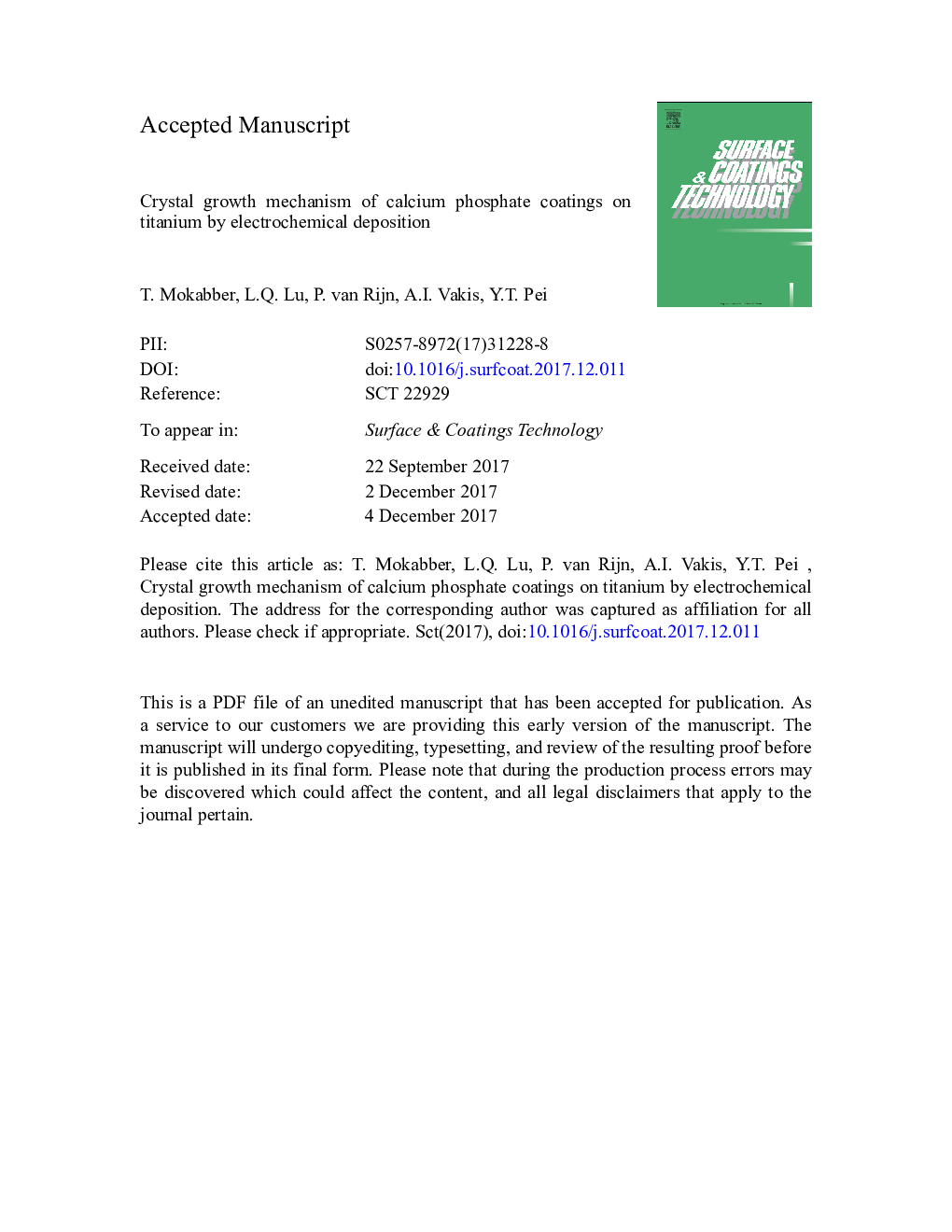| Article ID | Journal | Published Year | Pages | File Type |
|---|---|---|---|---|
| 8024702 | Surface and Coatings Technology | 2018 | 24 Pages |
Abstract
The pulsed current electrochemical deposition of calcium phosphate (Ca-P) coatings on a titanium substrate was investigated in this study. The effects of applied voltage and H2O2 concentration in the electrolyte solution on the phase composition and coating morphology were studied using X-ray diffraction and scanning electron microscopy. At lower concentrations of H2O2, the coating consists of mixed phases of dicalcium phosphate dehydrate, octa-calcium phosphate, and hydroxyapatite, whereas increased H2O2 concentrations results in a dual phase of octa-calcium phosphate and hydroxyapatite being deposited. Furthermore, with increasing H2O2 concentration, the voltage must be reduced in order to avoid H2 evolution. The best conditions for Ca-P deposition were achieved at â 1.4 V and 1.5 wt% H2O2. The morphological changes at different deposition times as well as the crystallographic orientation of deposited crystals were studied using scanning electron microscopy and transmission electron microscopy. It was found that the crystal growth of Ca-P coatings is a time-dependent process. During the first stage of deposition (t = 1 min), the electrolyte is supersaturated and randomly oriented polycrystals of Ca-P nucleate and form nanoplates. During the second stage (t = 3 min), crystals grow slightly in a more oriented fashion and form micro-sized plates. During the third stage (t > 10 min), the deposited crystals grow in a highly directional manner and the morphology of the coating consists of elongated ribbon-like single crystals.
Related Topics
Physical Sciences and Engineering
Materials Science
Nanotechnology
Authors
T. Mokabber, L.Q. Lu, P. van Rijn, A.I. Vakis, Y.T. Pei,
